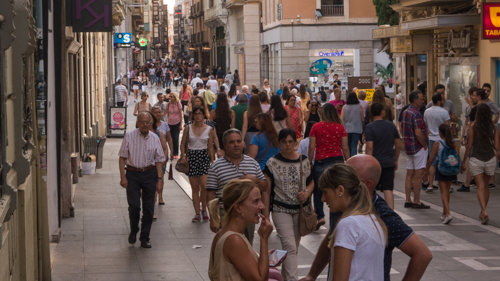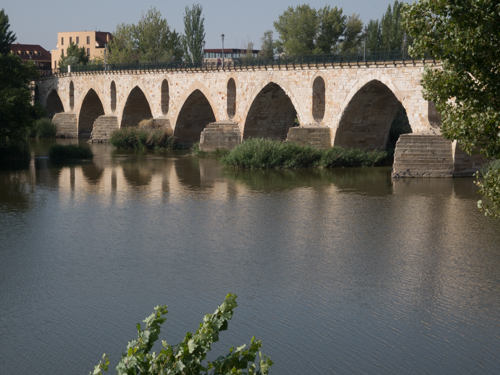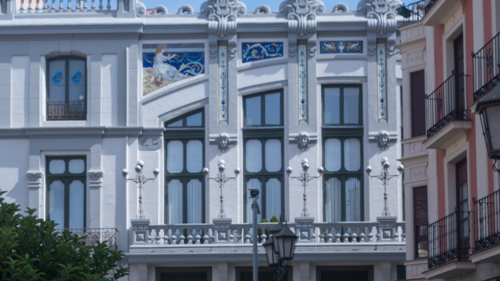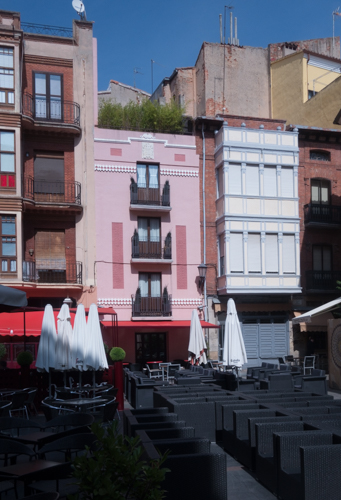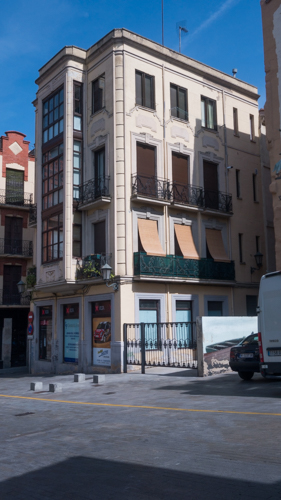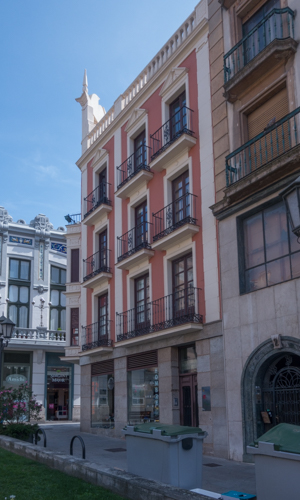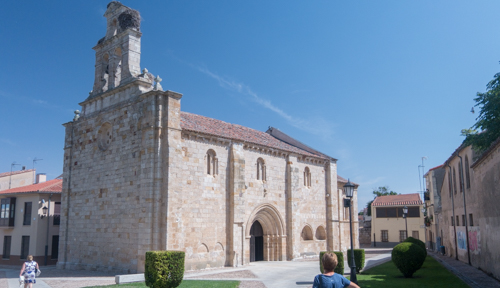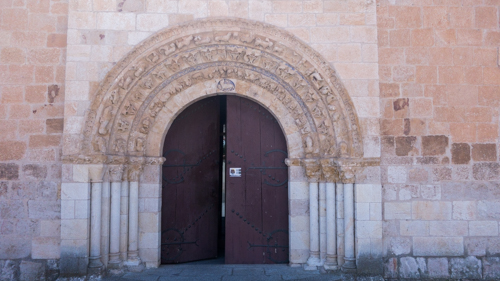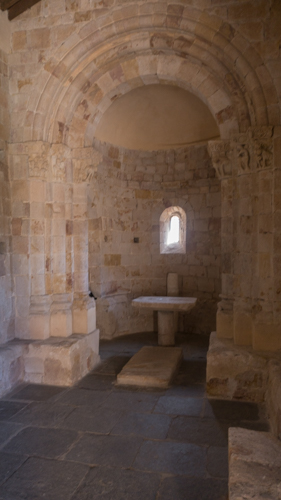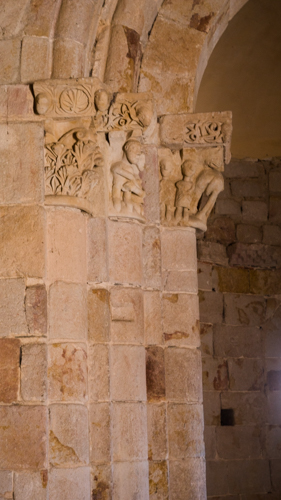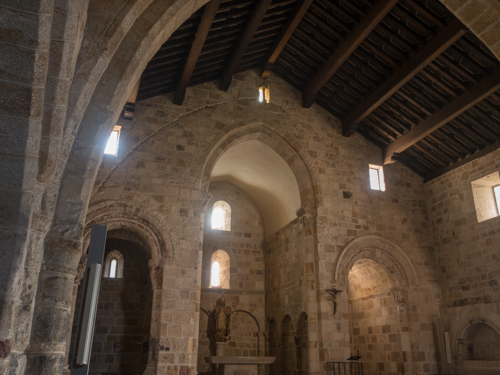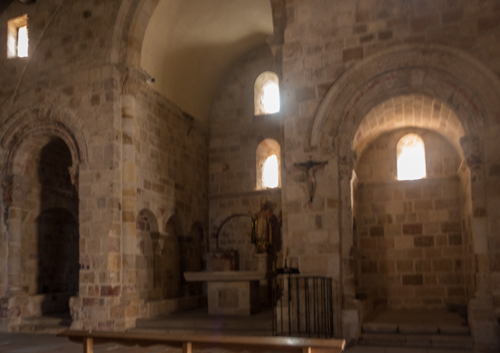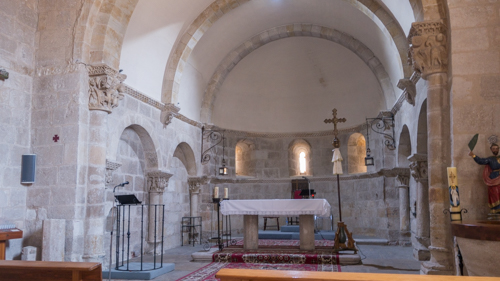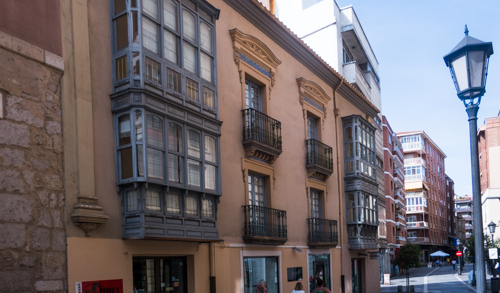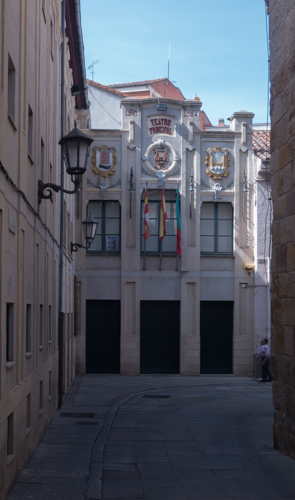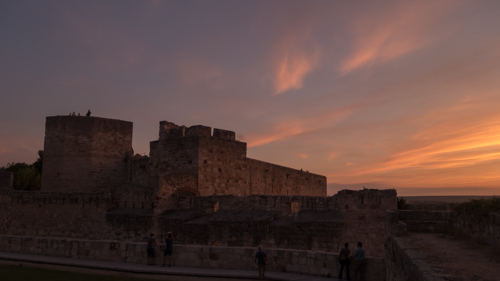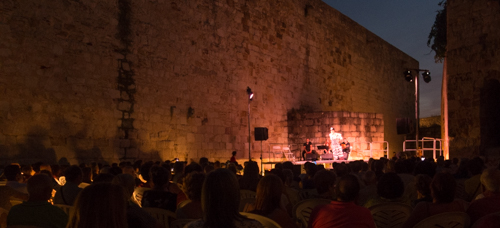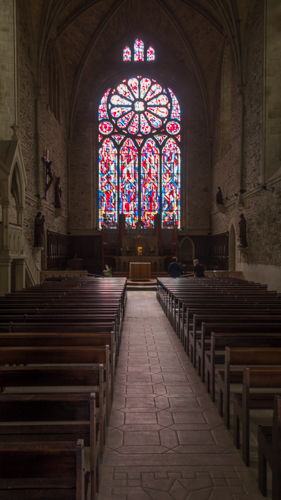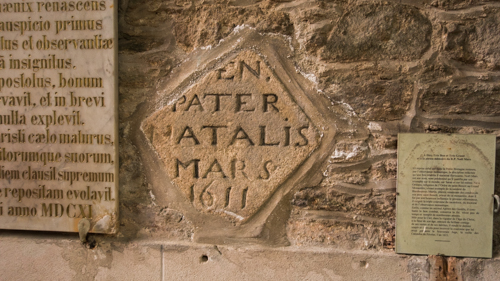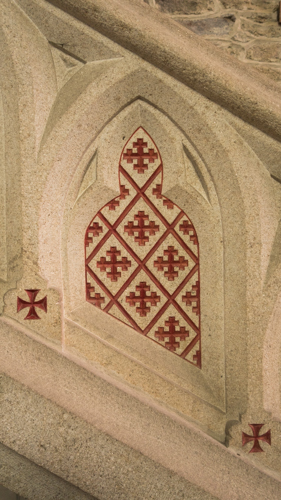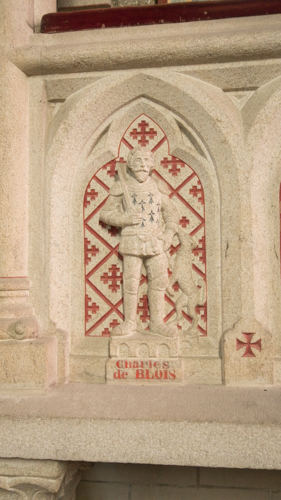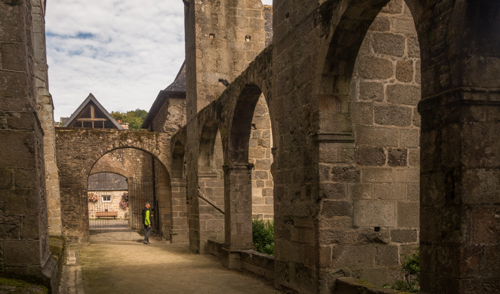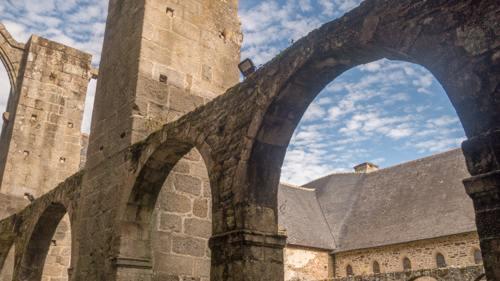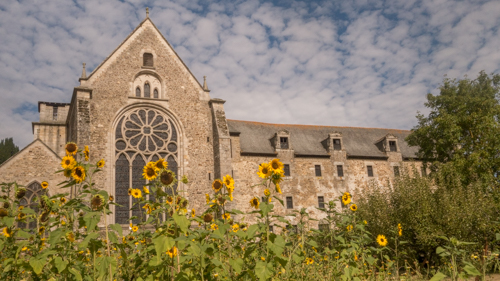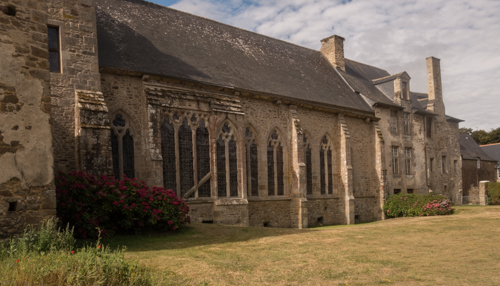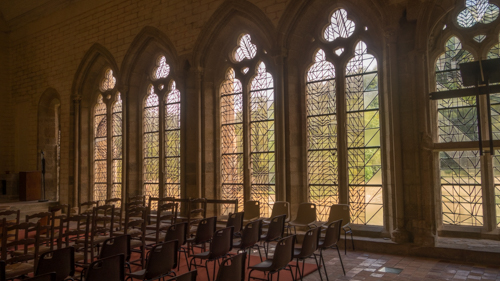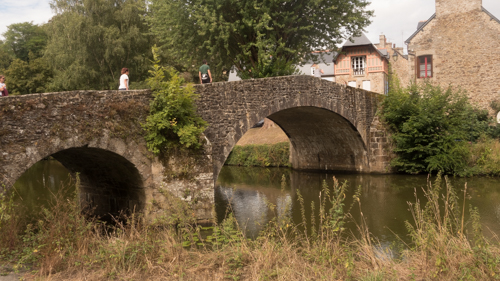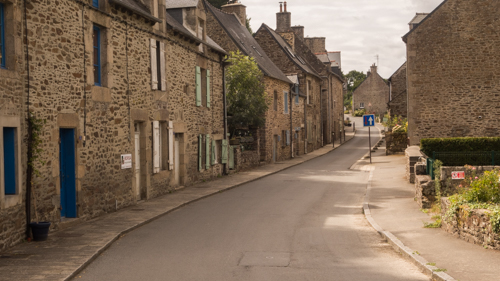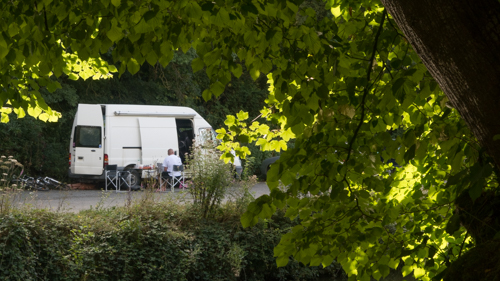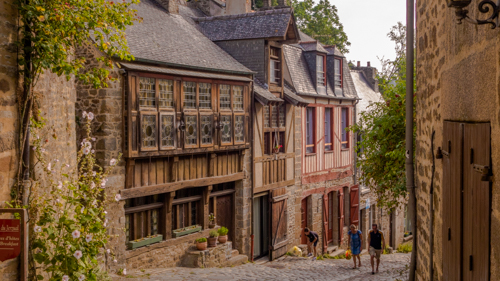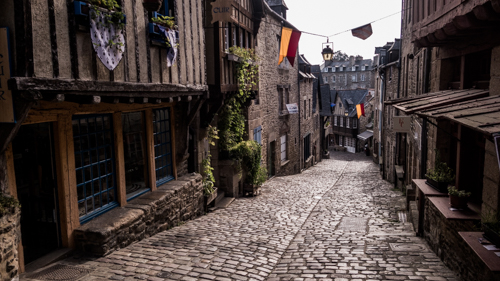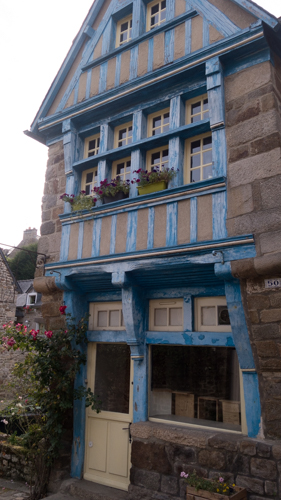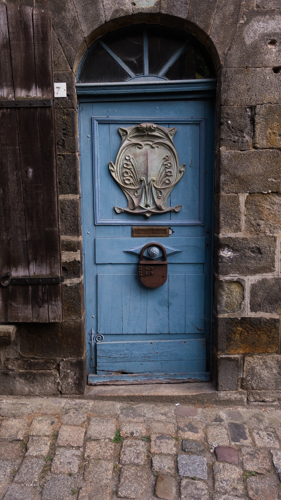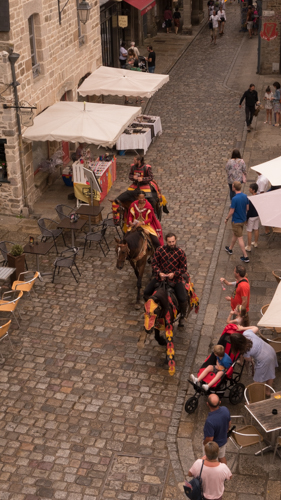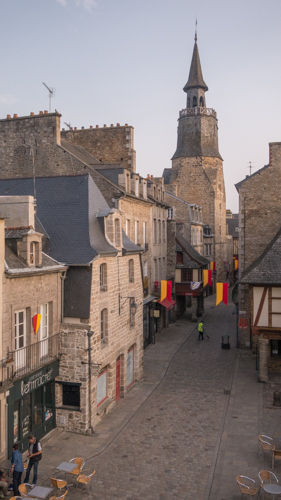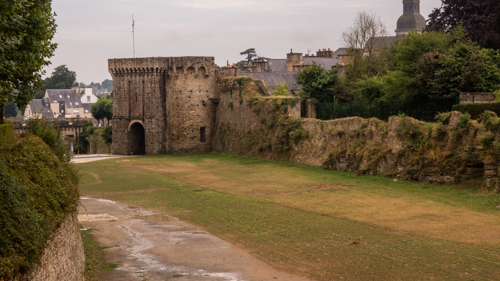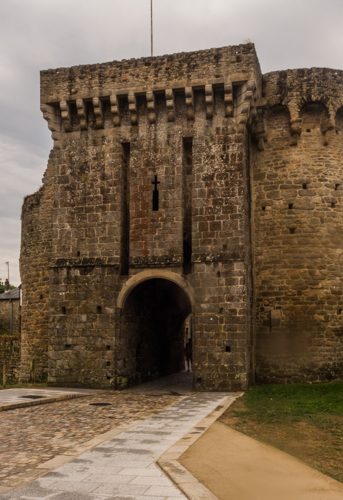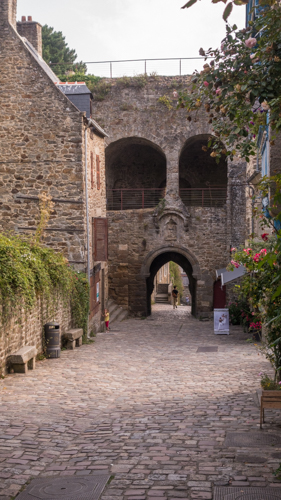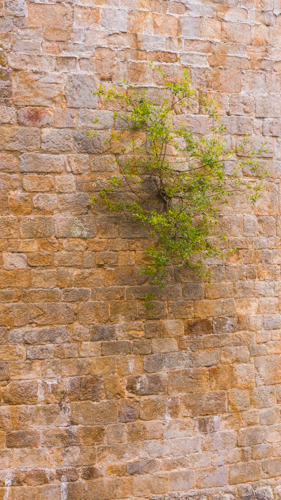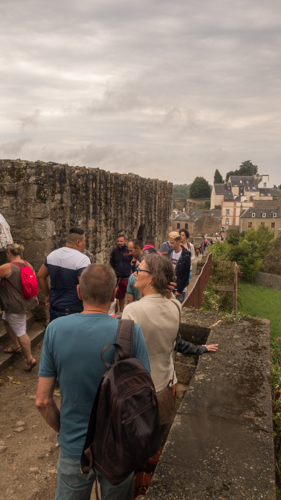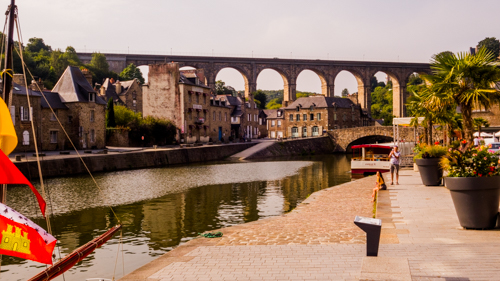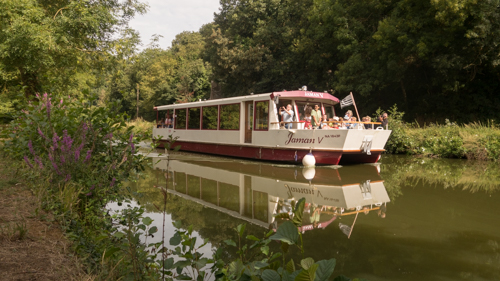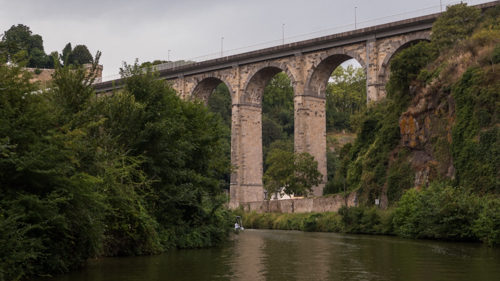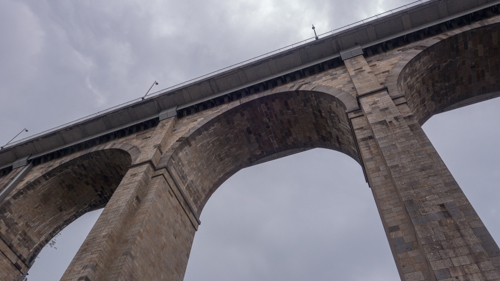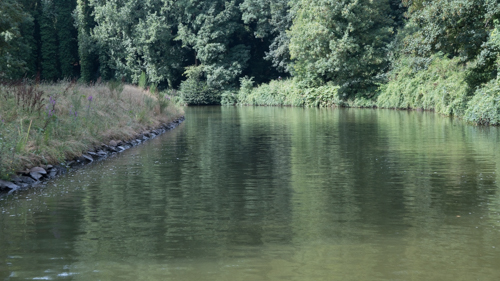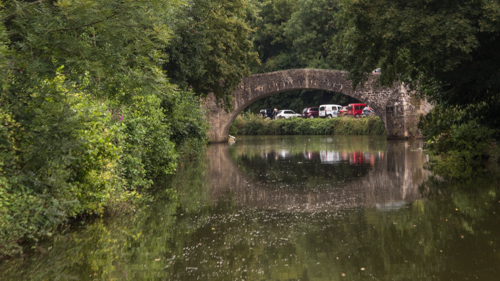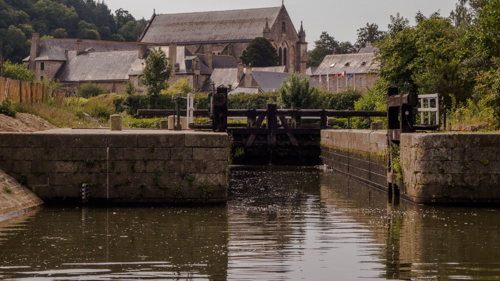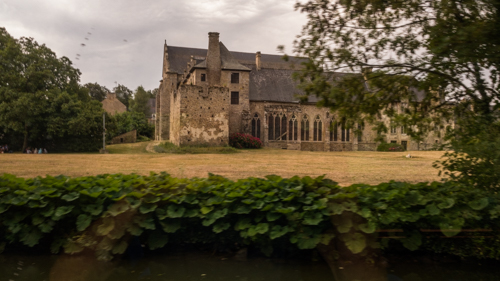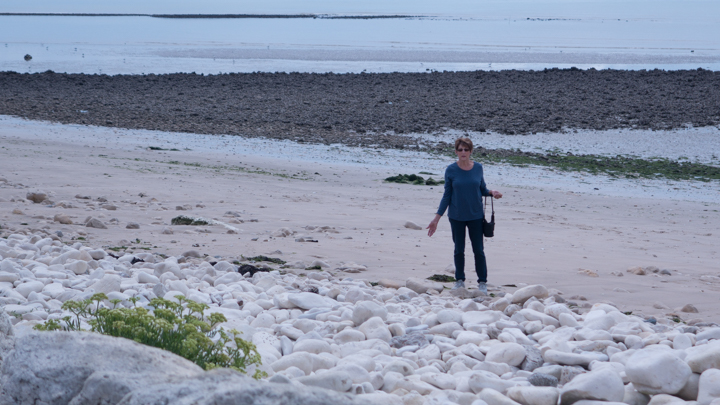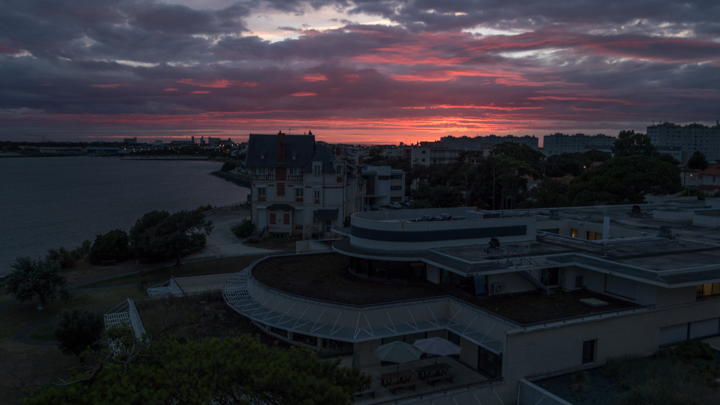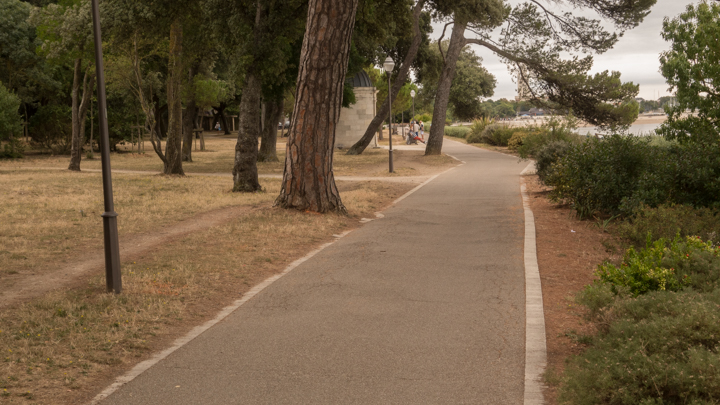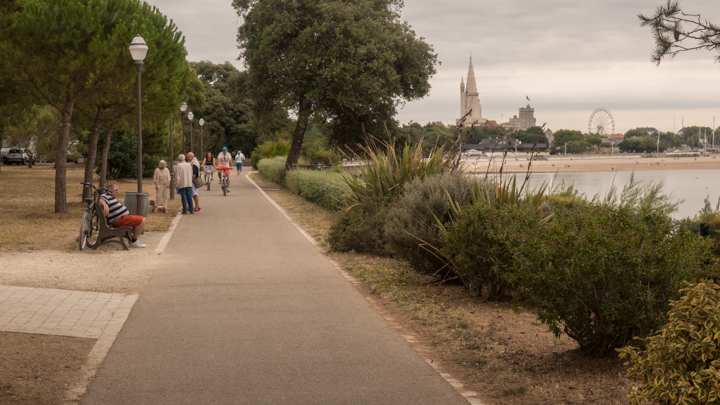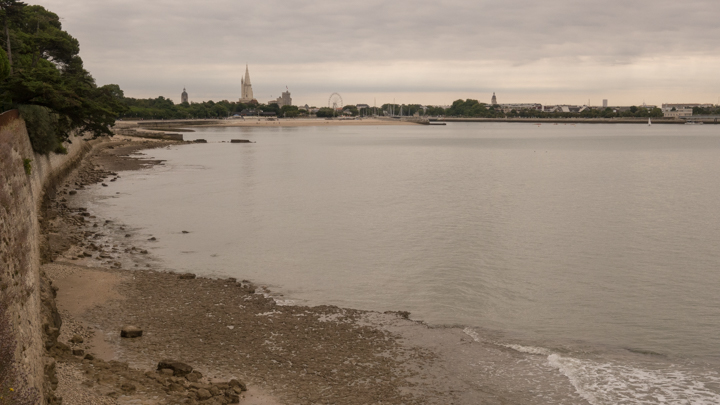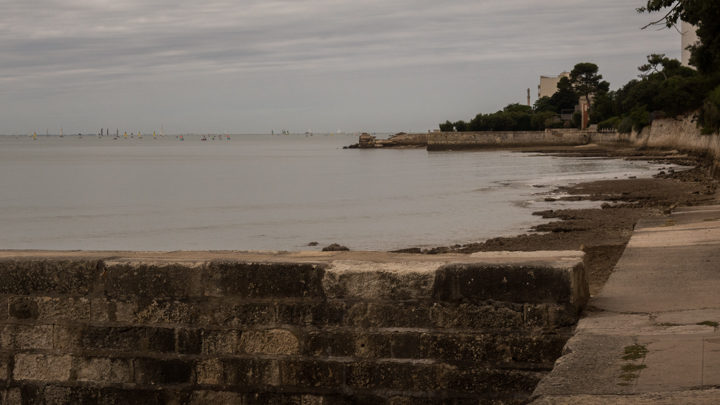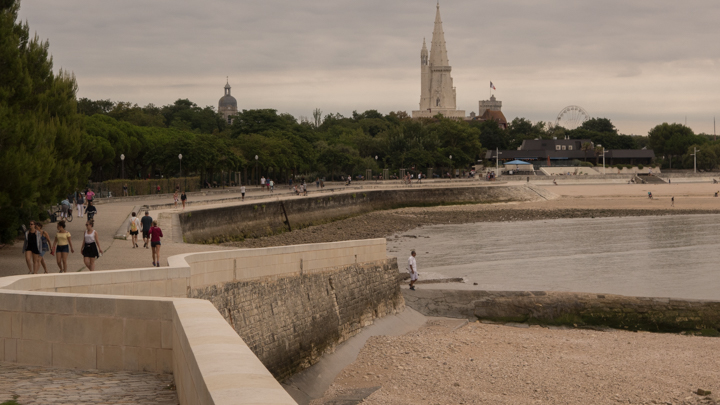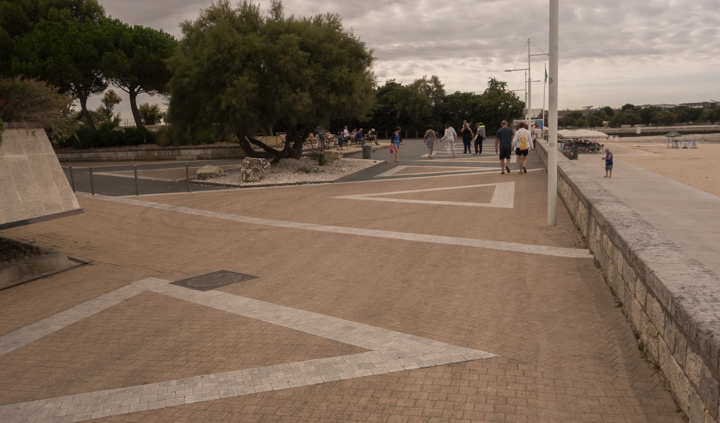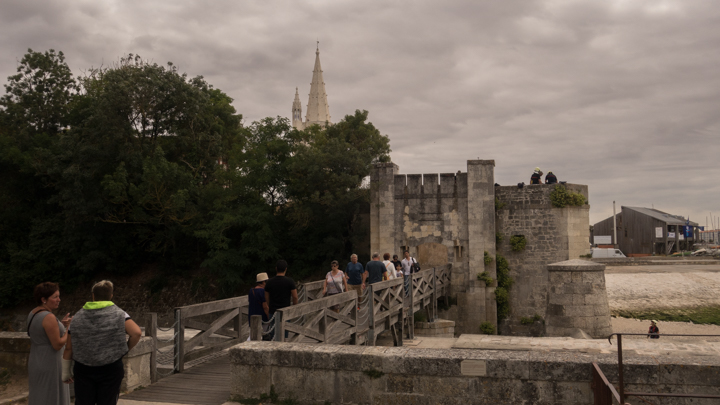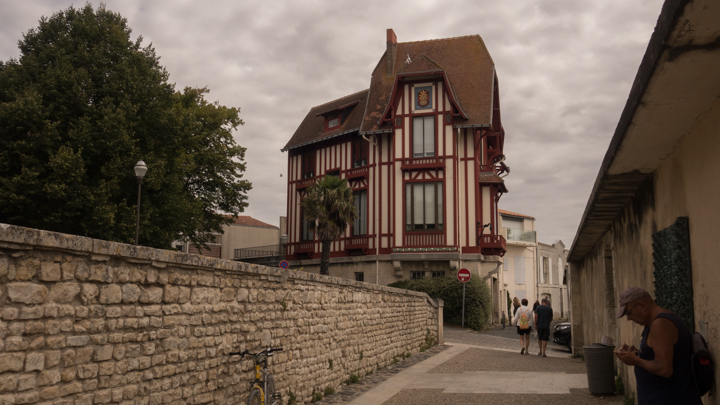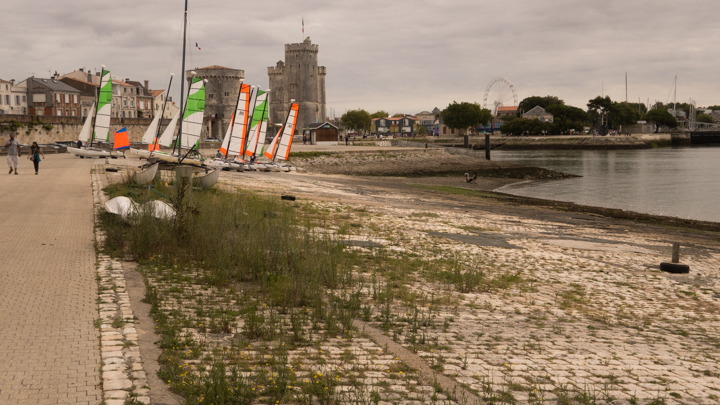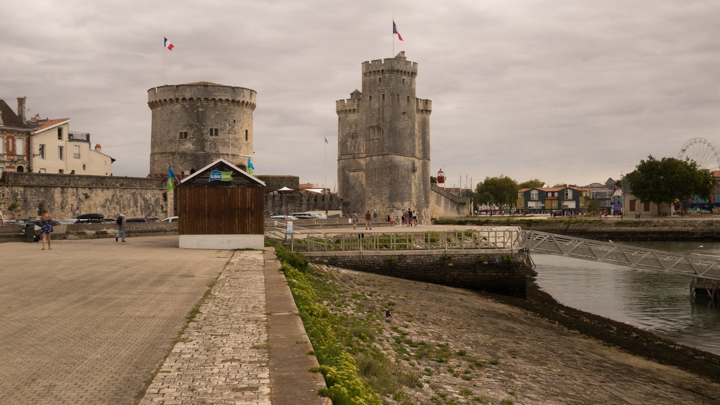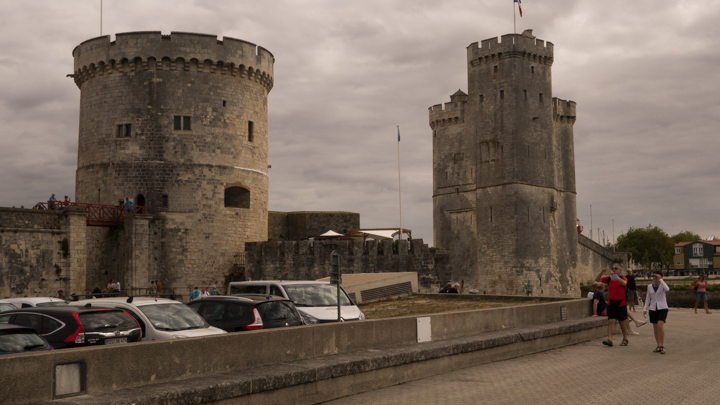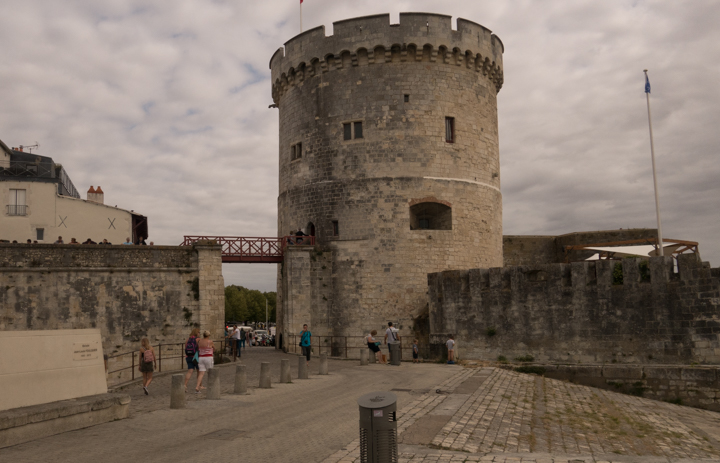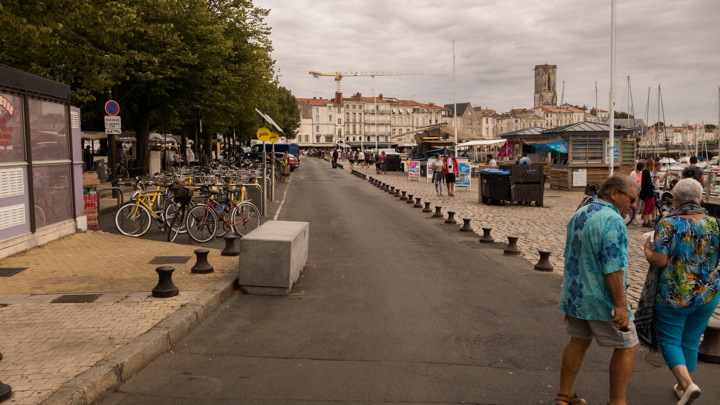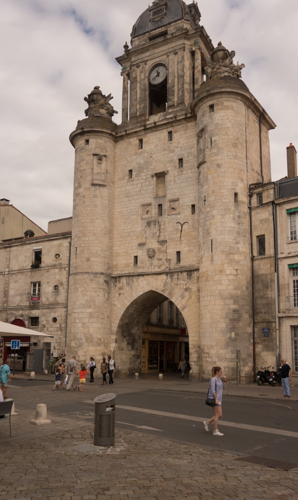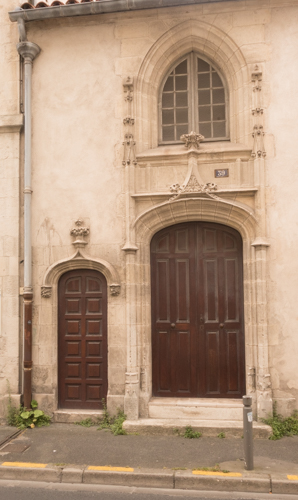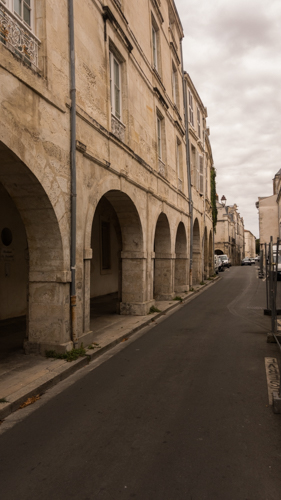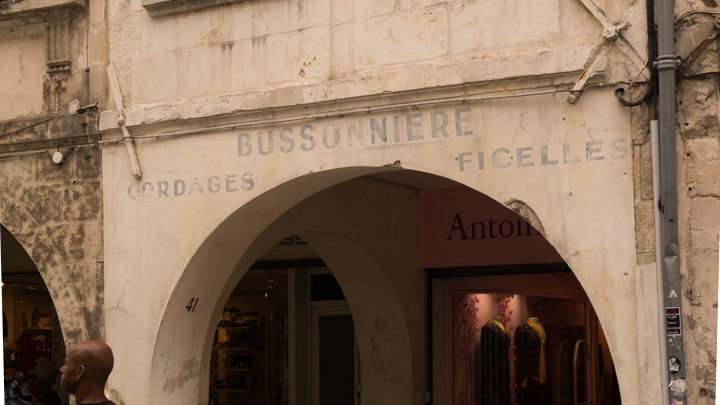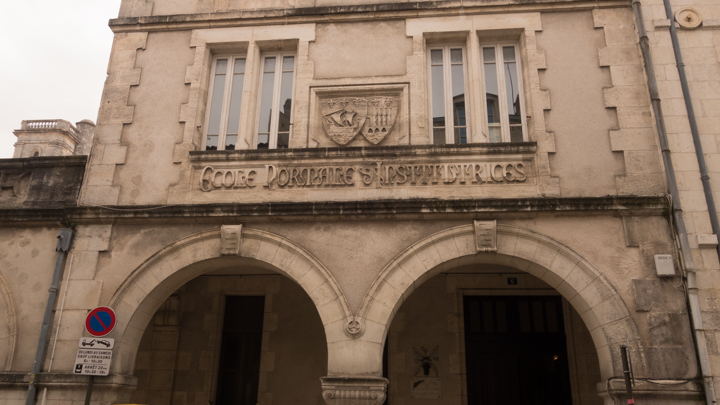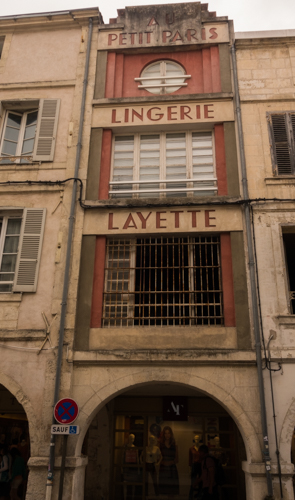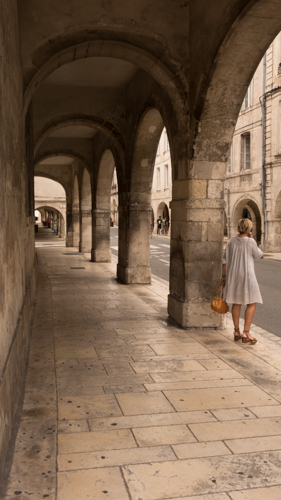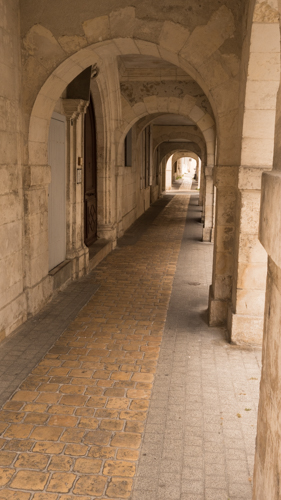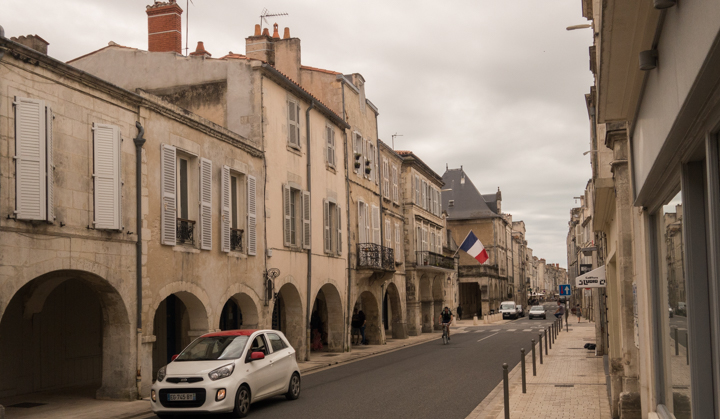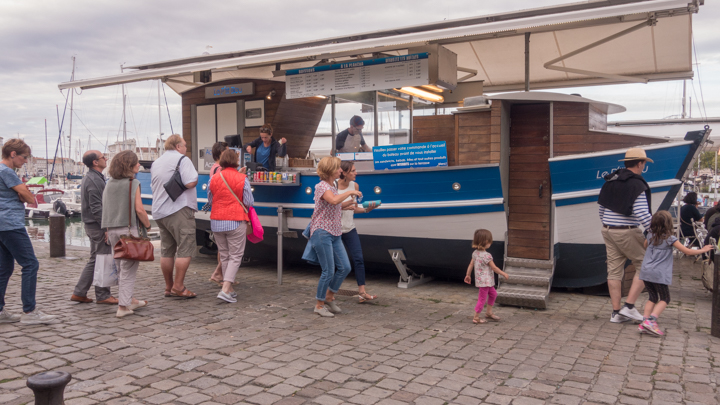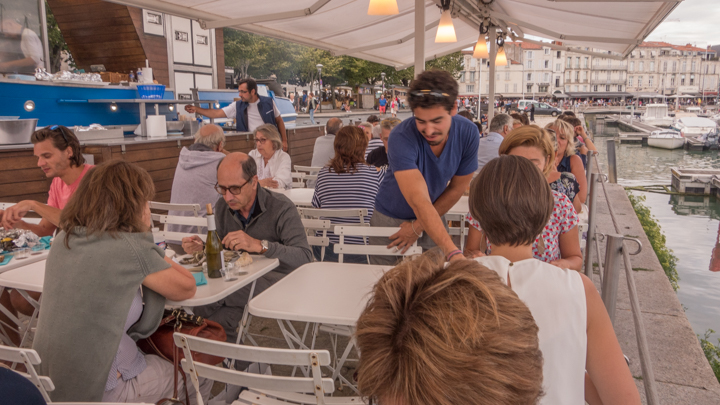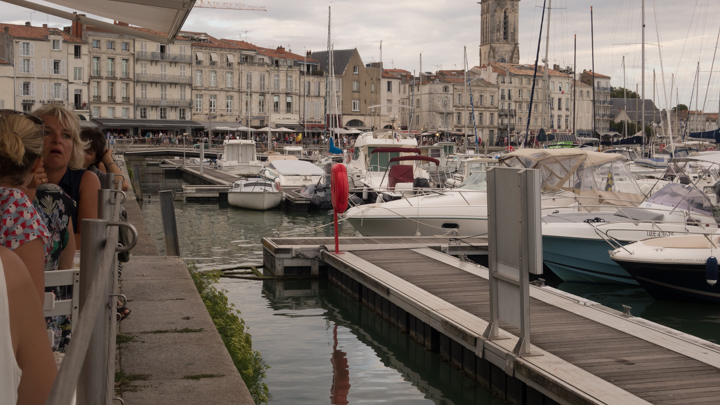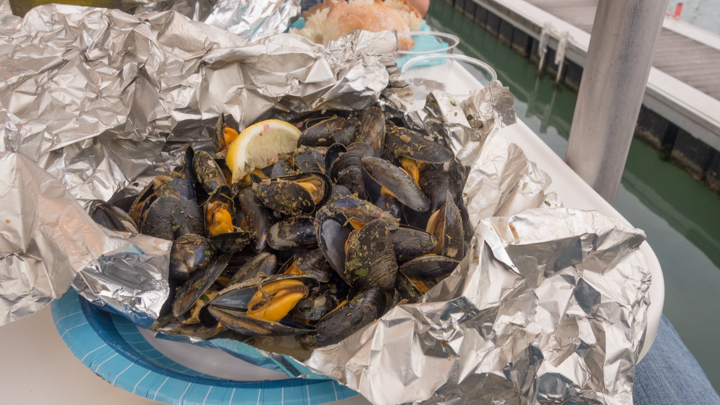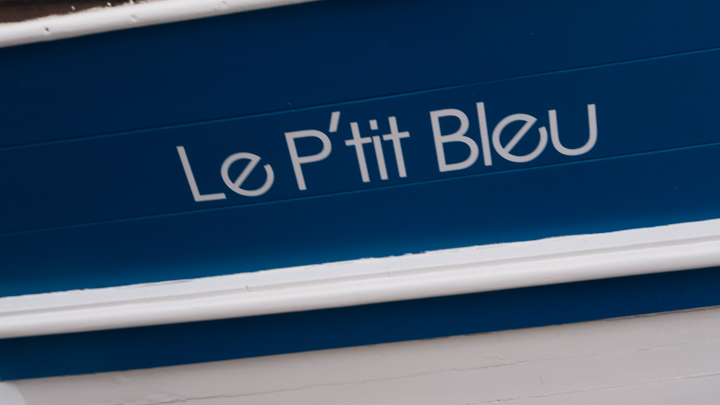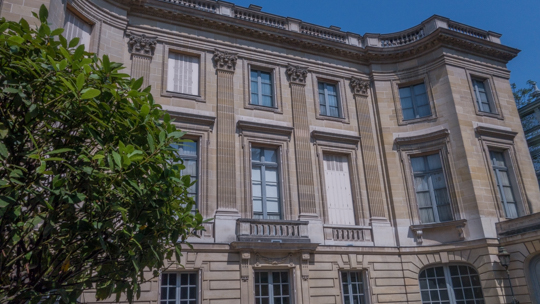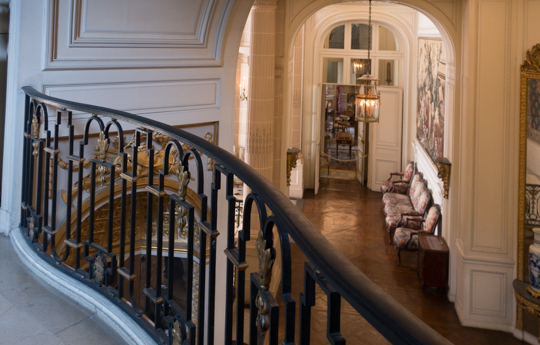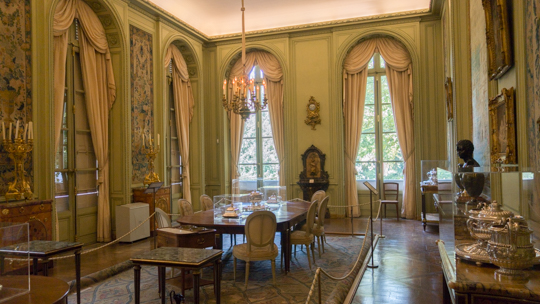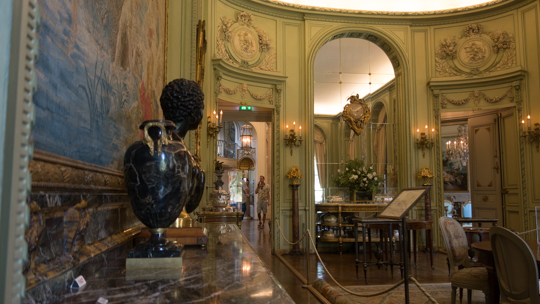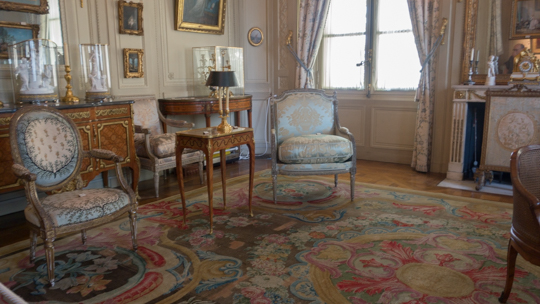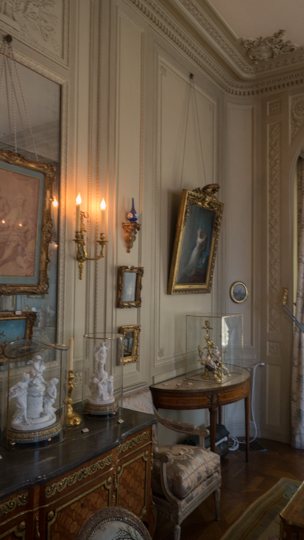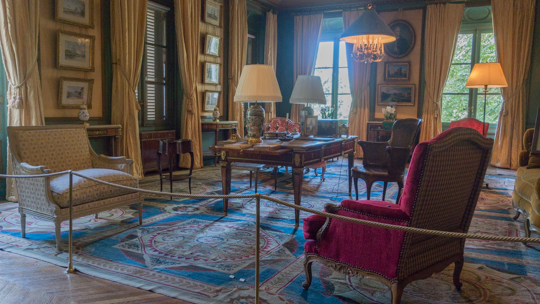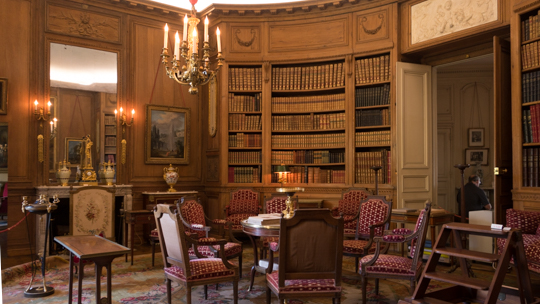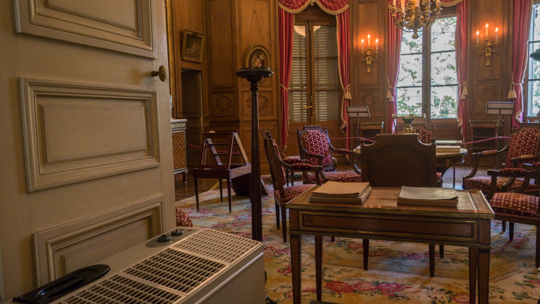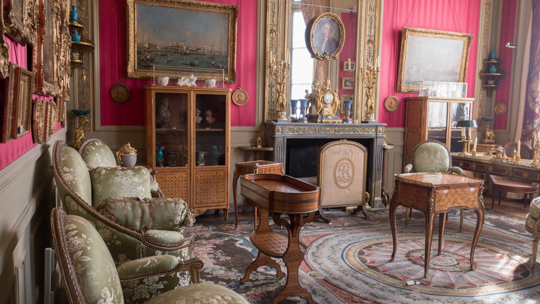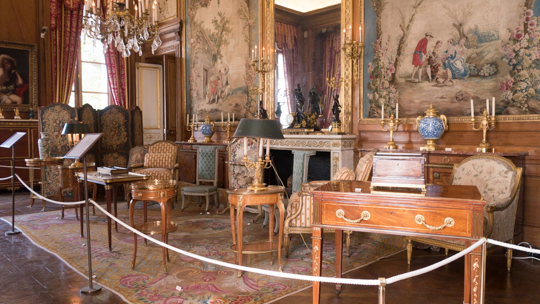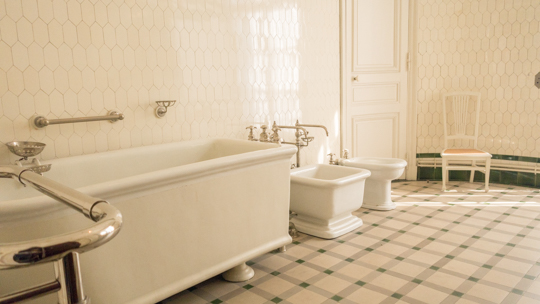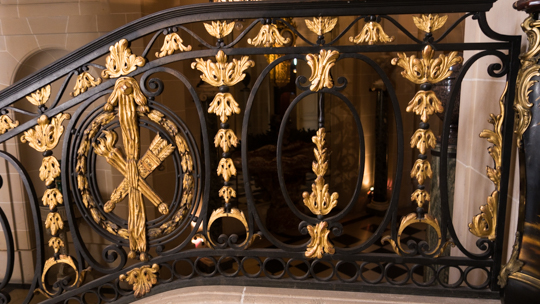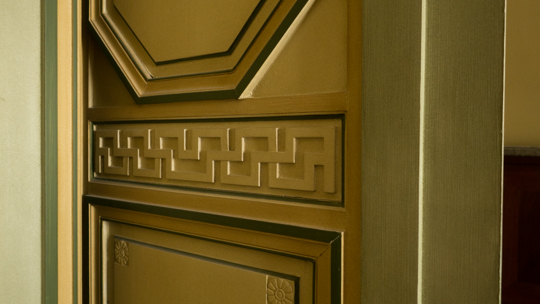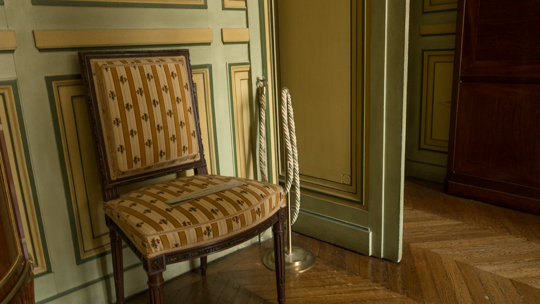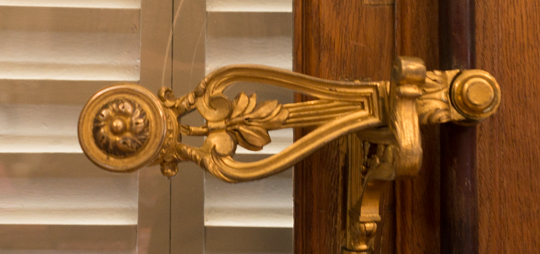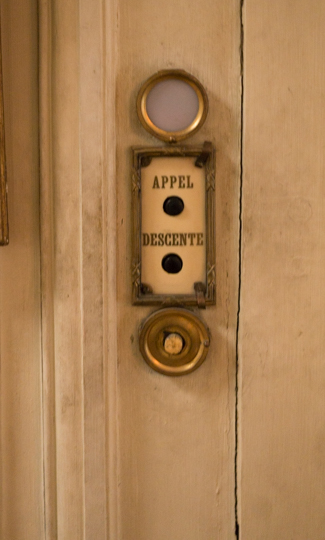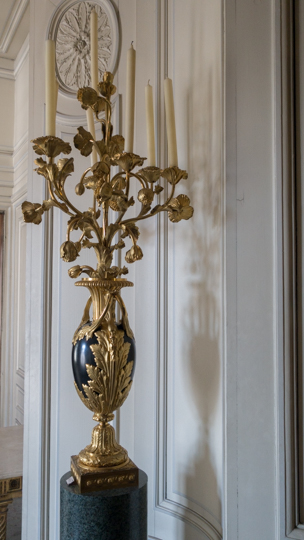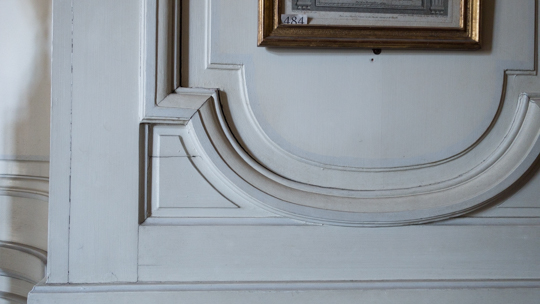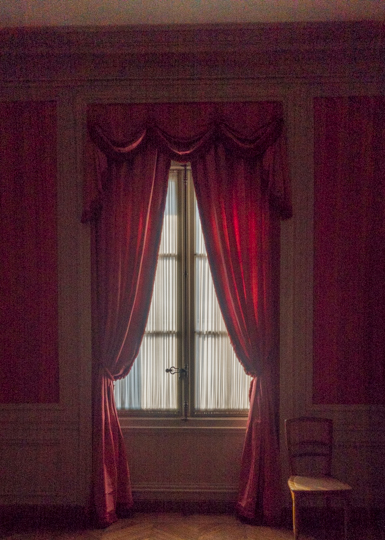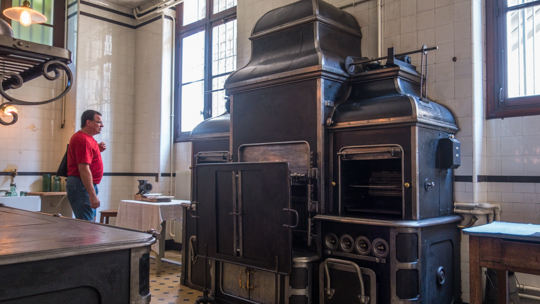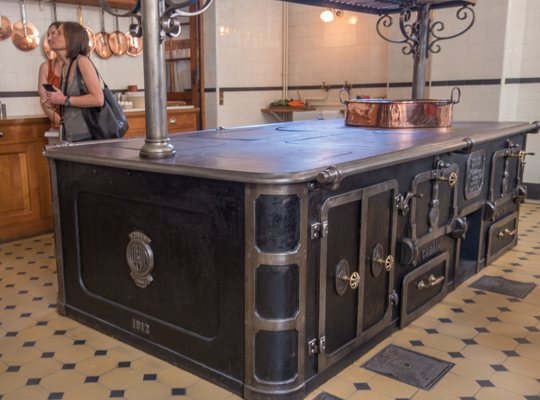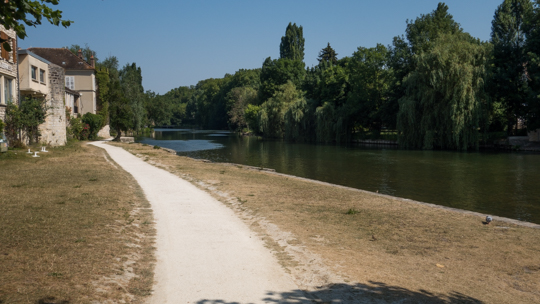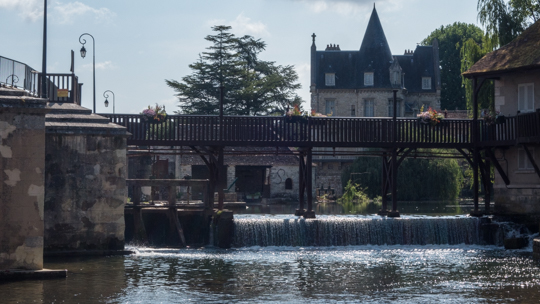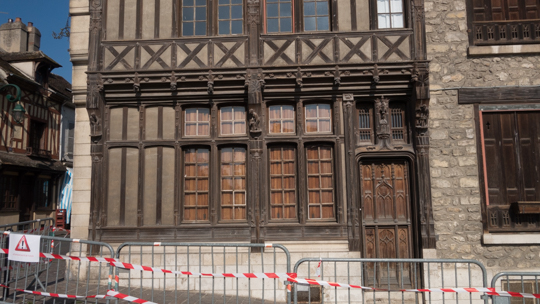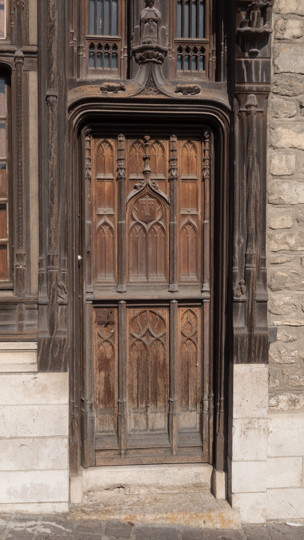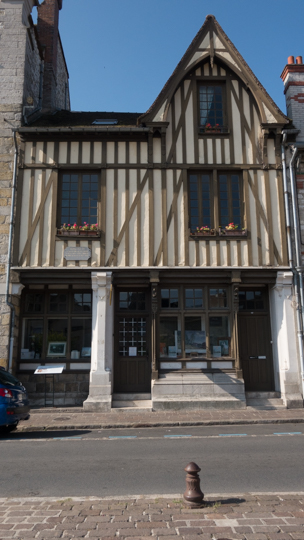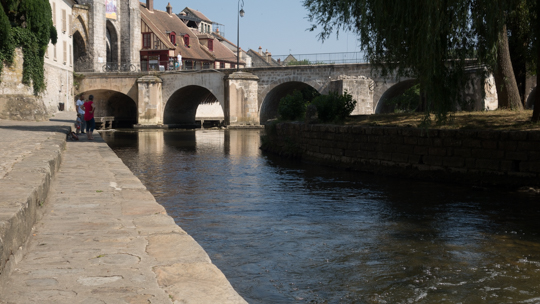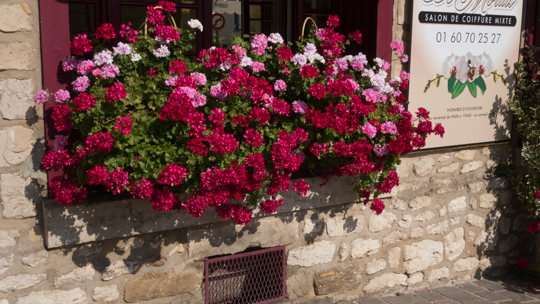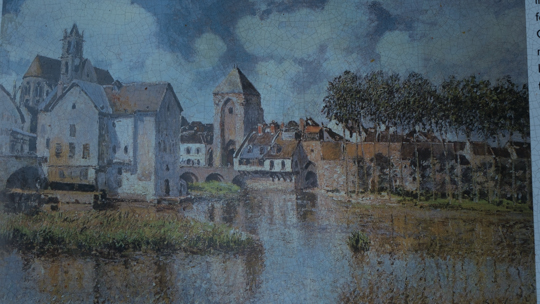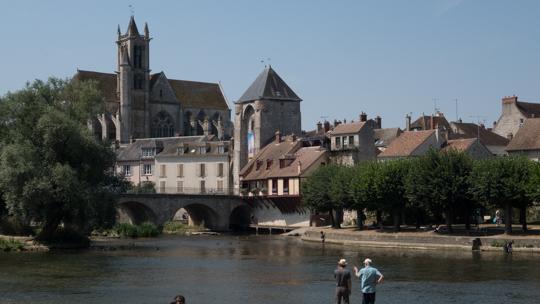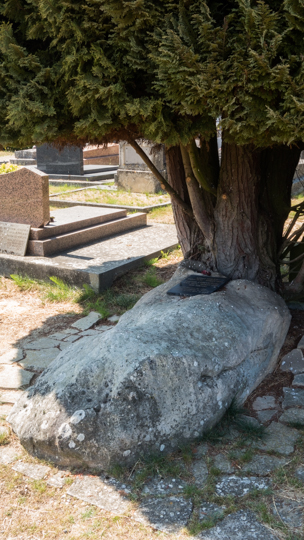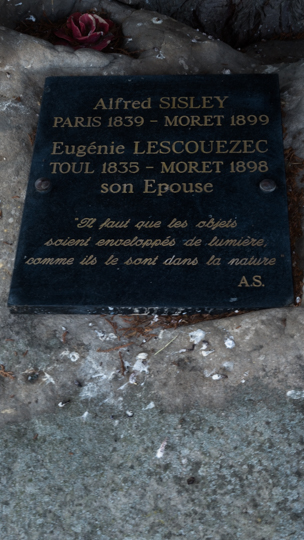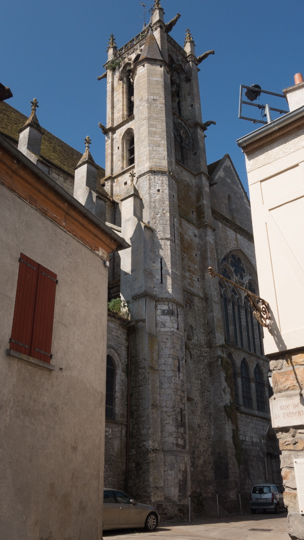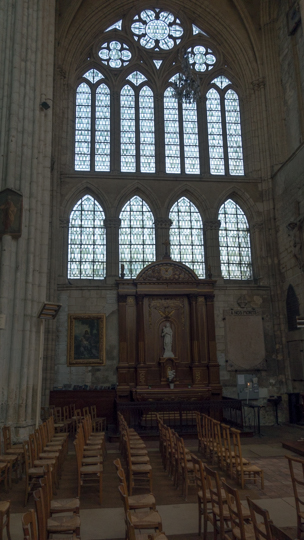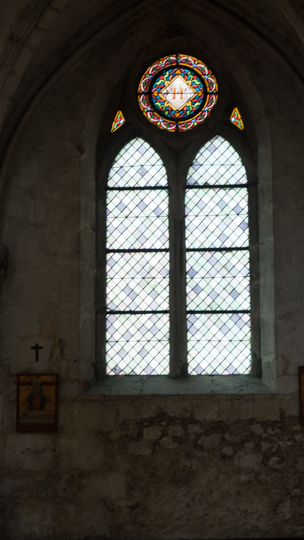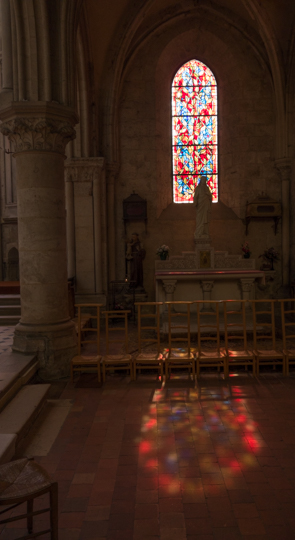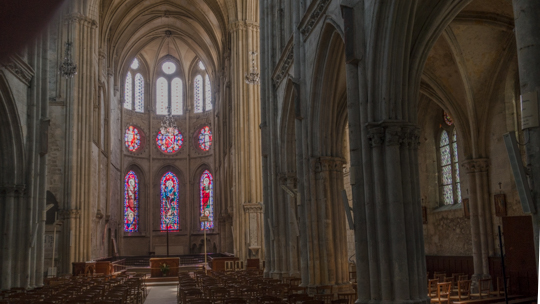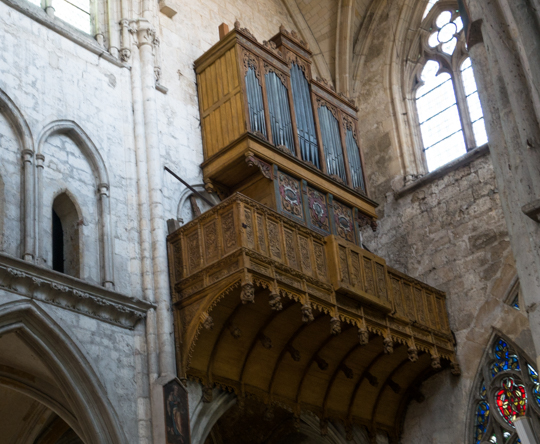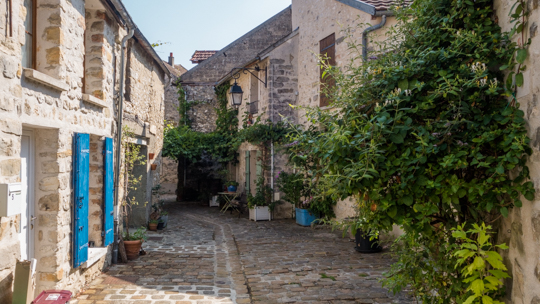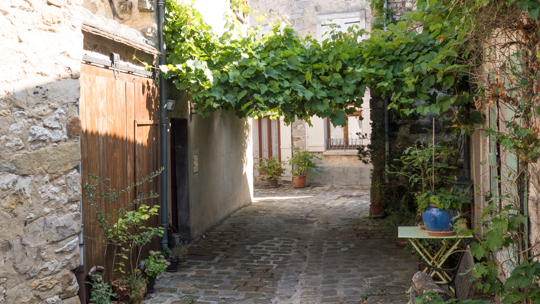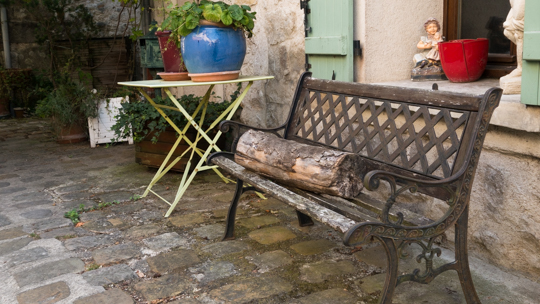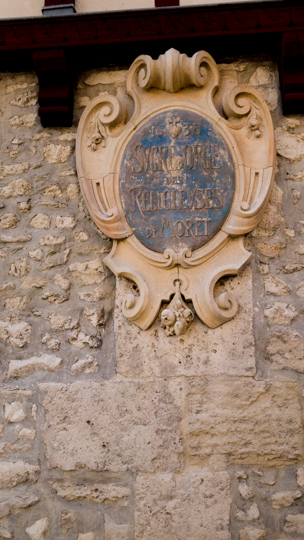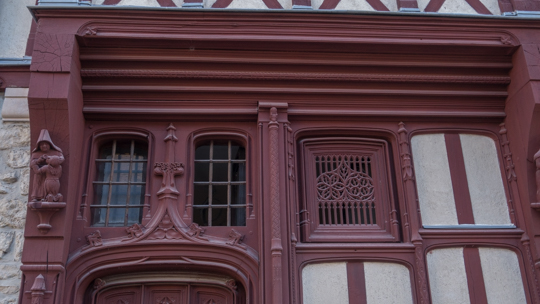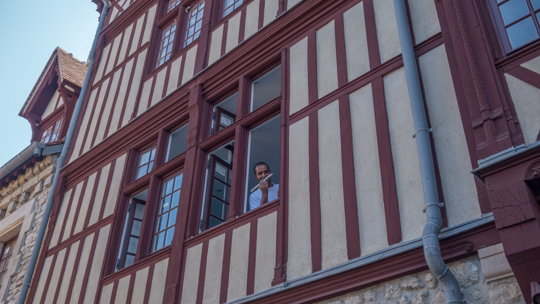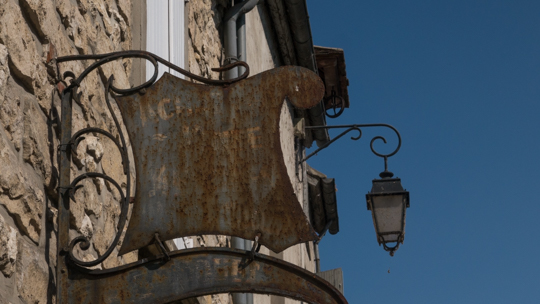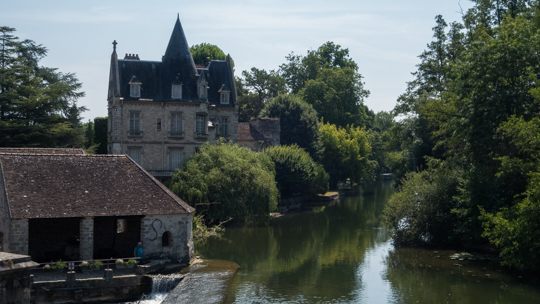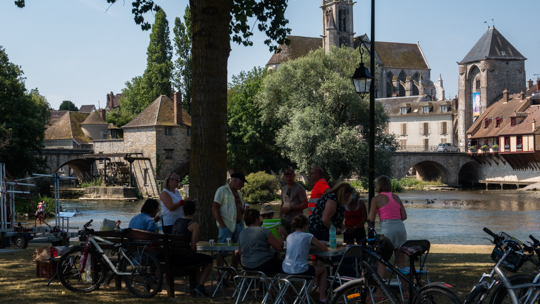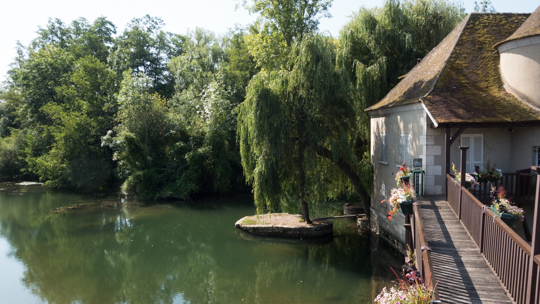We had an…um…”interesting” day of travel yesterday. More than once we fell back on the “when something goes wrong” philosophy of our friends Marv and Becky who, when they encounter something crazy, say, “Someday we’ll look back on this and laugh, so we might as well laugh about it now.” Wise words…
Driving to La Rochelle
Off we went, only a few minutes later than planned. Now, we knew we would be traveling on toll roads and we knew what the tolls would be at each of the three toll booths. We also knew that our fancy-schmancy, chip-equipped Alaska Airlines Visa card would not work at the toll booths, so we had cash. (I should point out that it is difficult for us newbies as we approach the toll-booth lanes to tell which lane takes cash, and there might be a lane with a person to take our non-automatic card, but you can’t tell which lane, if any, that person is in until you’re committed to another lane.) First toll booth, no problem. Second toll booth, I inadvertently entered a lane that took credit cards only. Merde! I knew this was going to be a problem. But I asked Laurie to give me our Boeing Employees Credit Union fancy-schmancy, chip-equipped Visa card and…it worked! This is a big deal to have a working card for the tolls and we were quite happy about it.
Half an hour later we went through the place where drivers pick up a ticket to start the next toll portion. No problem. An hour or so later, we left the autoroute so had to pay our toll. We roll up to the booth, confident because I’ve got a working card (and cash as a backup). I insert my toll ticket and the machine spits it out. Merde! Tried again. Same thing. Again, same thing: says it can’t read my ticket. Now we had this happen to us a few years ago so I knew what to do: push the red Help! button and talk to the voice at the other end.
“Bonjour,” says the voice. “Bonjour,” says I (remember, every transaction in France starts with bonjour). “J’ai un problem. Est-ce vous parlez Anglais?” “Oui, a little.” I explain that the machine rejects my card and she says, as I expected, “Read me the last five numbers printed on your ticket.” (When you get the ticket as you come into the toll road, it prints on it a big long number that records where and when you entered, so they can tell how far you’ve driven, hence, what you have to pay.) I look at the ticket, and there are no numbers printed on. I tell her, “There are no numbers,” and get the response, “What do you mean there are no numbers?” I explain and she asks, “Where did you get on the autoroute?” The booths are all named and she thought I would just happen to remember the name of the place where I’d gotten the faulty ticket. Right. Fortunately, after failing to remember that little bit of esoterica, I say, “It was south of Tours.” “Oh, okay,” and the machine flashes the correct toll (19.30€, about $22), and she says, “Now you can insert your card. Au revoir,” and signs off. Phew.
Not so fast. At that moment, a window in the ticket-taking, toll-paying machine opens and a very nice employee asks if we’re having a problem. I explain it to him, he looks at the ticket, points to a blank spot on it and says there should be numbers printed there. “No numbers,” I say. “No, no numbers. It happens,” he responds, takes the ticket, closes the door and disappears. I then insert my credit card to pay.
Not so fast. Evidently, as I talked to the now-gone employee, the machine has timed out, and now it will not let me even insert the card or a 20€ bill. If there hadn’t been a solid gate down in front of the car, I would have just left without paying. I push the red Help! button again, get another person, and explain to him the problem. He, of course, says, “Read me the number on your ticket,” to which I reply, with just a little exasperation in my voice, “I don’t have the ticket because an employee took it and, anyway, if I had the ticket, there were no numbers on it.” “What do you mean, no numbers?” “We got on the autoroute south of Tours, and the toll is 19.30€,” said I. “Okay…” That amount appears on the machine, I put the card in, it works, the gate goes up and off we go.
It seemed like two hours, but in fact was probably ten minutes (to do something that should take ten seconds). The entire time we had a huge truck behind us and that must have been the most patient truck driver in the world, as not once did he honk or yell at us. I will say one thing, though, that shows we’ve become reasonably comfortable here: over the entire time, with one thing after another going wrong, we never panicked, thinking we’d be at the toll booth for days or that someone would come and arrest us for toll-road fraud; never got angry; never got frustrated. We just kept thinking, “We’ll get through this somehow,” and we did. Laugh we did not.
Always an adventure…
But wait, the day’s adventures are not over…
In La Rochelle we stay at a lovely hotel with a beautiful view of the water. One room is on the corner of the top floor and has an almost 180 view of the harbor. We lucked into staying in this room the first time we came here and have asked for it every time since. We were so pleased to again be in this room. But…an adventure lurked.
We love La Rochelle, and after we arrived, we took a nap, had some wine, walked into town, had dinner at our favorite “colorful” restaurant (more on that in a later post) and walked back to the hotel.
At 10 o’clock we were sitting on the balcony outside our room, enjoying a beautiful sunset on a warm evening and a lovely glass of wine when the automatic shades that cover the door from the room to the balcony started to close. I didn’t realize what was happening for a second and when I did realize, my old brain did some remarkable feats of thinking and I immediately realized that if those shades closed completely, we would be sitting on a balcony on the sixth floor with no way to open the shades and get back into the room! I jumped up and grabbed the shades and got it to stop about a foot above the ground. Then I crawled inside and tried to use the switch that raises and lowers the shades to get them back up. They went up about a foot and stopped.
So in this beautiful room, where we always leave the shades and windows up and open all night so we have fresh air and the sound of the waves, we have a shade with about two feet of opening.
I call the front desk, start to explain the situation and get the response, “I don’t speak English.” So I go down there, with Google Translate in hand. He comes up to the room, fiddles around and saying, “Ne marche pas,” leaves. Yes, that’s right, it wasn’t marching at all. C’est en panne: broken. So we prop the shades up as much as we could with a chair, open the door to the room to get some ventilation (the hotel might be a 3-star, but air-conditioning? Pas de climatesée). A night of miserable sleep followed.
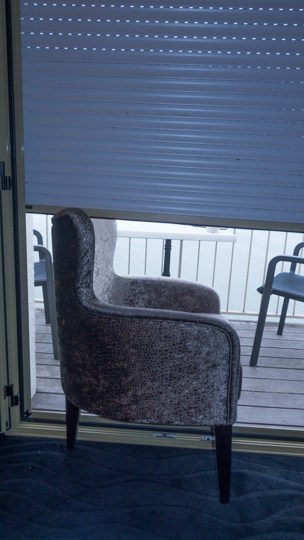
Our sophisticated “fix” to allow some air into our room.
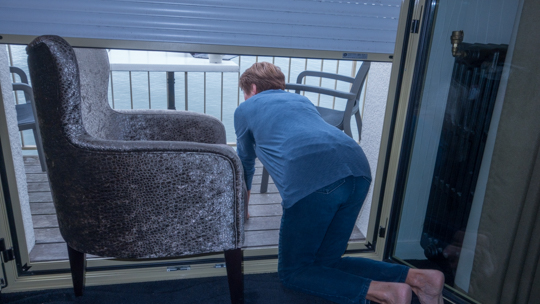
Laurie “stepping” out onto the balcony to enjoy the view.
This morning I went to the manager, who came up to the room and checked things over. She found that the master switch to power in the room was messed up a bit, and when she fixed it, the shades went up. So all we lost was one night of sleep. That’s all. Nothing more. Grrrrrrr.
When I pointed out to her that we had no way of knowing that the shades were going to automatically close at 10 pm (I didn’t even address why they would be set to do that), she said that when we checked in, the receptionist should have told us. “No, no one said anything to us about that.” She responded, “That’s not normal.” No, I guessed that being stuck on the balcony was not normal. I suspect someone got a talking-to soon thereafter.
Today looks cooler than yesterday, good for a long walk. We might walk off some frustration while we’re at at. Update: it just started to rain.
Update: there is actually a kind-of-logical explanation for what happened, which I will share with any fool who wants to hear it. The important bits are that someone should have explained to us that the shades are connected to the master switch (they didn’t), that they will close at 10 pm if the room key isn’t in the master switch (it wasn’t) and that when the card is put into the master switch, the shades should be controllable by the shade switch (they weren’t).
